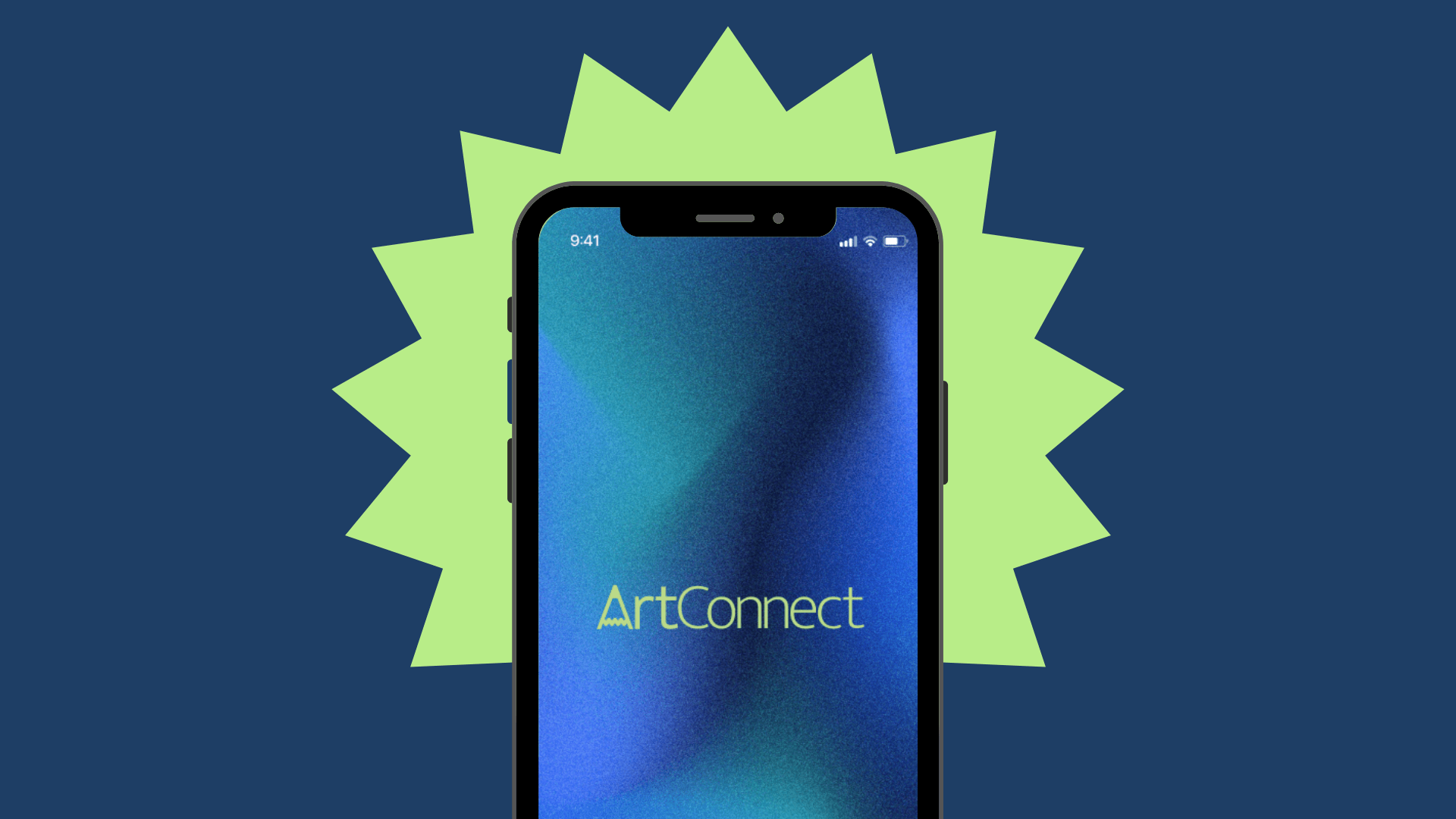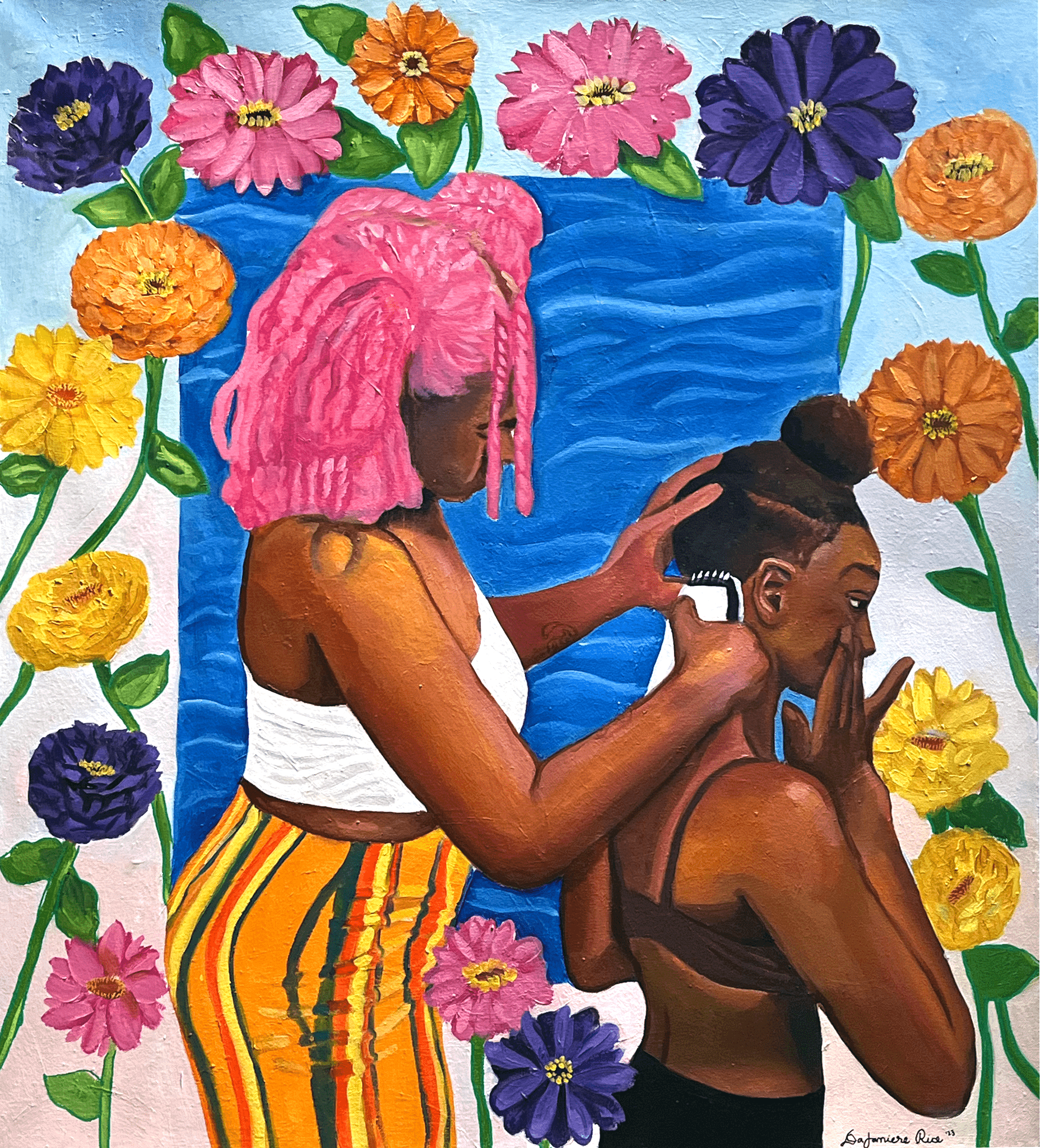
ArtConnect App Case Study
The primary goal of the ArtConnect app is to serve as a platform for artists, gallery owners, and art collectors to interact and find opportunities for resources, art calls, networking, and funding. The design intent was to create an intuitive, user-friendly experience that caters to the needs of different user groups.
This painting is called Sacred Conversations and is my own art work.
How it started…
As a member of Detroit’s art community, I saw firsthand the unique challenges that emerging fine artists—digital artists, painters, sculptors, fiber artists, and others—face in accessing resources for professional growth. While these artists are dedicated to their craft, they often struggle with business fundamentals, such as structuring their businesses, creating contracts and invoices, building credit, and developing business plans. Beyond this, many lack access to funding for supplies, project development, marketing, and participation in events like art fairs. Professional development, networking, and financial planning support are also limited, leaving many artists without the tools they need to thrive.
Although some local groups and initiatives offer support, many resources are limited by restricted meeting times, geographic constraints, and a lack of equitable access, making it difficult for artists with non-traditional schedules or those outside urban centers to fully benefit. The proposed solution is to develop a streamlined, centralized tool that provides Michigan artists with relevant, up-to-date resources. This tool could be an app, newsletter, or virtual network to unify resources, programs, and opportunities to create a user-centered solution that supports artists across Michigan in their professional journeys, regardless
of location or schedule.
Research
In a preliminary survey with 26 respondents, I aimed to identify the primary challenges faced by individuals in their creative and professional endeavors. Participants were asked to describe their most significant obstacles, with responses falling into several key categories. The data reveals that funding is the most frequently cited challenge, affecting over a third of respondents (34.6%). Other notable difficulties include marketing and promotion (19.2%), time management and motivation (15.4%), and finding or organizing shows and events (11.5%). This insight provides a foundation for understanding the audience demographic and the barriers these individuals encounter and guides the development of potential solutions within the project.
34.6%
Responses mentioning funding, resources, and financial support.
19.2%
Challenges in marketing, self-promotion, or building a clientele.
15.4%
Issues with scheduling, finding time, overbooking, or motivation to create.
Problem Statement
What tool can enable emerging artists to form stronger connections within their community and easily access information about art opportunities, resources, and events?
Generating Ideas
Sketching was a crucial step in exploring concepts for the app. I created eight sketches, each representing a different approach, from digital to physical or non-digital solutions. This process helped me visualize the best option for users. After reviewing the concepts, I refined the ideas and chose the app design that aligns most with the audience’s demographic and tech-savviness. Building on this, the next step was to generate ideas that would shape the app’s functionality and user experience, ensuring that it addressed the specific needs and pain points identified through research and personas.
Personas
From the data collected, I developed personas representing artists at various stages, from early-career creators seeking resources to established professionals looking to connect and support emerging talent. This allowed us to tailor the design to address specific pain points, ensuring that each feature met the unique needs of our diverse user base. By grounding our decisions in these personas, we were able to create a solution that was both relevant and impactful for all users.
Story Mapping
I created a story map that mapped out the journey of the personas, showing the steps they would take to engage with the app, from feelings of frustration to finding various art opportunities. The blue sticky notes represent the actions that all users are expected to take at some point, helping me identify key interactions and ensure consistency across different user experiences. This process allowed me to understand their needs at each touchpoint, ensuring the app’s features were intuitive and aligned with their goals, making their experience seamless and effective.
Draft Paper Prototypes
Given that the app serves diverse user types who each have unique needs, I started by creating a simple onboarding quiz. This automatically captures users' specific needs and preferences, helping to tailor their experience on the app. It uses their responses to filter opportunities, resources, and potential connections. I designed the quiz with multiple-choice questions to enable easy and quick responses. In the paper prototype process, I mainly focused on what actions the artist user would take. This process also gives an overview of how it would be if another type was chosen or if multiple types were chosen. The steps I included were: selecting a user preference, doing the quiz, creating an account, finding opportunities, filtering opportunities, saving the ones that most fit, going to saved opportunities, selecting one to apply to, and applying.
The home page was designed to be a dashboard showcasing personalized opportunities based on the quiz results. My intent was to make the users feel immediately seen, acknowledged, and understood, increasing their engagement. The hamburger menu brings up quick links that the user can select to quickly get to where they want to go.
I feel that the quiz concept works very well, helping filter opportunities effectively and personalize the user interface. However, I need to think about whether there’s also going to be a desktop version of this and if so how the features differ in appearance. A significant change I'd consider is adding a tutorial or walkthrough for first-time users. I think some initial guidance would be helpful to familiarize users with the interface. Additionally, I want to incorporate more visual displays of artists' work on their profiles. This would bring them to life on the platform and encourage interaction.
Digital Prototype
In this digital prototype, I made iterations and implemented feedback including the ability to close out of certain features once clicked on, an option to skip processes such as the onboarding quiz, and a fixed navigation bar at the bottom of my app’s display. I incorporated all these suggestions into my design, as they each enhance the user experience by making the app simpler to use and easier to navigate. Additionally, the 'skip' feature also provides users with greater flexibility and choice.
Digital Prototype
Once the design flow and functionality were at a good place, I used Figma to begin creating a high-fidelity prototype of ArtConnect. This version’s goal is to look most like a final product with all previous feedback and research implemented.
Features:
Users can create their personalized profiles, browse through an extensive database of art exhibits and funding opportunities, and engage with other users. The search and filter function further tailors opportunity discovery according to users' interests. Favorite offerings can be bookmarked using the red heart on each option, saving it for later perusal. Real-time notifications of new opportunities and an in-app messaging feature augment user experience.
Access the final prototype in Figma here.
Conclusion
This project made me think more deeply about my audience and the unique challenges they may face regarding solutions including technology. This project led me to explore diverse ideas including a website, app, partnership program, physical art space, SMS tool, email newsletter, digital subscription, and an art zine booklet. While my final product evolved as an app, these concepts present many potential additional features that could enhance accessibility for my diverse audience. This project has produced a straightforward prototype demonstrating the basic functionality of ArtConnect. However, when I think of ArtConnect's full potential, future implementations could include virtual exhibitions and AI predictive analytics for user behavior-based recommendations. Elements left unimplemented include a tailored user experience for gallery owners and art collectors. The onboarding questionnaires would vary for these user types, resulting in unique homepages for each. Furthermore, exploring the inclusion of an SMS tool and email newsletter as additional features of the app hasn’t been implemented. These added features would assist users with recognition and recall when navigating various opportunities, remembering deadlines, and enhancing overall brand recognition.
My design philosophy for the art app focuses on inclusivity for artists, gallery owners, and collectors. It prioritizes community, resources, art calls, networking, and funding opportunities. ArtConnect's design has a significant societal impact by democratizing and fostering collaboration in the art world. It dismantles traditional barriers, creating a more interconnected and inclusive artistic community. The emphasis on providing resources and funding empowers emerging artists, aligning with broader values of equal access to the arts. The app's commitment to user-friendly design reflects a societal shift towards digital inclusivity and disrupting the culture of exclusivity that has been deeply rooted in the art community.































